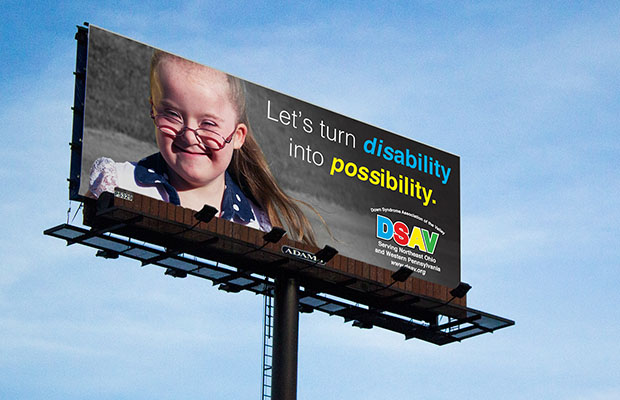What is persuasive ads? In order to persuade your audience to choose your brand as their preferred option for purchase, persuasive advertising uses the interests, desires, and motivations of your target market.
When used effectively, persuasive advertising can engage new audiences while persuading current ones to buy your products or services by appealing to their thoughts, emotions, and desires.
We’ll look at the benefits and drawbacks of persuasive advertising in this piece and explain the distinction between it and informative advertising. We’ll then go over some tactics and applications for this strategy.
Table of Contents
What Is Persuasive Advertising?
Consumers’ desires and interests are used by persuasive advertising to persuade them to buy a good or service. This type of marketing frequently focuses on the advantages the product or service can provide the consumer.
Rather than focusing on the benefits of the product or service itself, persuasive advertising tries to invoke an emotional response from audiences using their own feelings and emotions to build a positive association with products.
Customers are more inclined to buy from your brand if you present the products in a favorable light.
Persuasive advertising looks at three main categories of emotion (more about them below):
- Ethos: Ethics, credibility, character
- Logos: Logic and reason
- Pathos: Feelings and emotions
You should choose one category of emotions and base the core of your message on its ideals depending on the type of persuasive advertisement you want to produce.
This enables you to create an advertisement that appeals to your audiences for the right reasons and avoids messaging that is unclear.
You May Also Like: What is Ambush Marketing?
Pros And Cons Of Persuasive Advertising
Like other forms of advertising, persuasive advertising has advantages and disadvantages. Now that we have them all in mind, we can see how they all work and what benefits a business can reap. First and foremost, this strategy adheres to a customer-centric philosophy, which means that a business concentrates on keeping customers happy and makes an effort to meet their specific needs.
Second, the strategy is always based on justifications for a product’s worth and convincing customers that it can address their issues. By emphasizing a product’s qualities, value, features, or advantages, it encourages customers to buy it. Businesses are thus successful in building credibility and trust in their goods.
Emotions, needs, and desires are all factors in persuasive advertising that persuades consumers. Because of their feelings toward the brands’ products, consumers favor certain brands. A customer and a brand can connect and develop a strong relationship, which leads to brand loyalty, with the help of the right strategy and the motivations behind why people choose a particular product.
However, this type of advertising also has several disadvantages:
- the impersonal character of advertising;
- dissatisfied consumers;
- sometimes a deceptive picture of products;
- customer churn.
3 Main Categories Of Persuasive Advertising Techniques
Persuasive advertising aims to win over and earn the trust of your target market.
To do this, you’ll need to decide between the Ethos, Logos, and Pathos, the three major categories of advertisements that employ persuasive techniques.
Here are the differences:
Ethos
The messaging that establishes credibility and trustworthiness is the focus of the Ethos category of persuasive advertising techniques.
You achieve this by getting a reputable professional, famous person, or well-known brand to recommend a good or service.
This speaker or brand can convince the audience that they are ethical, trustworthy, reliable, and of good character and that what they say can be trusted.
Logos
The persuasive ads category in Logos takes a different approach, appealing to an audience’s sense of reason, logic, and rationality.
These ads that persuade may use data, facts, statistics, graphs, or tables to appeal to the logical mind of their audience.
Instead of appealing to the heart and emotions, the objective is to inform the intellect that there is something special about your product or service.
Pathos
By appealing to either positive or negative emotions, the Pathos persuasive ads category seeks to emotionally connect with the audience.
The use of memory, shared experience, nostalgia, or the senses are all effective methods of persuasion. With these, viewers will experience emotion while also understanding what you have to offer.
To persuade them to act, it uses a compassionate argument.
Pathos ads that successfully persuade viewers might feature a cute puppy, a mother and child who are in a loving relationship, a family in distress, or a person with a painful condition.

Persuasive Ads Vs. Informative Ads
Informative advertising is a different type of digital ad strategy that is frequently contrasted with persuasive advertising.
It’s crucial that you first comprehend the differences between the two strategies in order to decide which will serve your objectives and brand the best.
What Is Informative Advertising?
Advertising that is more fact-based and persuasive is referred to as informative advertising. Instead of appealing to the audience’s desires, informative advertising focuses on educating them about why they need your product.
It emphasizes how your product’s features and benefits address the issues that your customers have, and it may even make comparisons between your offering and those of your rivals. Even though this kind of advertising depends on statistics to prompt the desired action, the message is typically presented in a compelling way.
Which One Is Better?
Although informative advertising and persuasive advertising both aim to persuade your audience to take the desired action, their focus on various persuasion strategies is different. Therefore, regardless of the advertising strategy you choose, keep in mind that if you can get people to feel something, your ad will be successful regardless of the stimuli.
6 Persuasive Advertising Techniques
Now that you know what persuasive advertising is, let’s look at some of the various persuasive advertising strategies you can employ for your own brand’s online marketing campaigns.
You can use these strategies to produce persuasive advertising examples.
1. The Carrot And The Stick
One of the most well-known and effective forms of advertising is the “carrot and the stick.”
Logically, it makes sense that people prefer to have rewards over punishments. A carrot in advertising refers to the potential benefits that a customer will experience from using a product, and a stick refers to the potential consequences that a customer may experience if they choose not to use your product.
An advertisement may highlight the advantages of using a product, such as improved skin for a moisturizing company, or it may highlight a disadvantage, such as the likelihood of a robbery increasing if a customer does not purchase your brand’s home security system.
Because they appeal to some of our most deeply ingrained emotions, these persuasive techniques are effective.
2. The Scarcity Principle
You probably share the opinion of the majority of people who believe it is cool to own collectibles and rare goods.
Due to the fact that it can’t belong to just anyone, it makes the one you have appear to be more valuable. This is an example of the scarcity principle in action, which is a potent tool for persuading advertising.
When you make it seem as though your product is a limited offer, a one-time-only deal, or comes from a limited stock, you can persuade your audiences to make a purchase decision quickly before they lose out on the opportunity.
Having goods that others do not have or did not have the opportunity to buy in a timely manner appeals to feelings of power and self-worth.
3. Writing In The Second Person
Using second-person language with pronouns like “you” and “yours” is another important technique to use in persuasive advertising.
It helps you connect and engage with audiences on a more personal level and can be used to grab their attention and help them visualize your products and services in the present rather than the future.
4. The Call To Value
A call-to-action is something that all marketers are familiar with in marketing materials.
Customers need to take this step in order to advance to the following stage of the customer journey, so you should push them in this direction.
Making the CTA a call-to-value, or CTV, is helpful in persuasion marketing. This makes it clear to viewers that they are enhancing their lives by clicking the button or the advertisement.
5. The Bandwagon Appeal
Everybody avoids feeling excluded or behind.
When a business convinces customers that they must have a certain product or item in order to participate in popularity, it is said to be “jumping on the bandwagon.”
Rather than feeling as though they are missing out, a customer will instead try and purchase the product to join in on the appeal and meet their desire to belong.
6. The Celebrity Association
Utilizing influencers and celebrities in your advertising is another effective tactic for persuading consumers.
People want to be like the people that they admire, and when you use a celebrity testimonial or association, it makes your products appear more desirable and can help your customers decide to make a purchase rather than wait.
7 Persuasive Advertising Examples
Are you ready to observe effective advertising in action? Look at these instances.
1. Nikol
One of the best ways to grab attention and elicit an emotional response from your audience is to demonstrate the advantages of your product, as opposed to simply telling them about them. Obviously, Nikol’s paper towels can’t actually turn grapes into raisins, but this ad highlights the product’s absorbent powers in such a clear and clever way, they didn’t need to write a single line of copy
2. Heinz
In relation to food, the word “hot” has multiple meanings: having a high temperature and being spicy. Heinz cleverly emphasized the spiciness of their ketchup by using the association with high temperature, and their innovative approach to expressing the value of their product helped them capture people’s attention right away.
3. Mondo Pasta
With this crafty use of guerrilla marketing, Mondo Pasta perfectly aligns their copy with their creative — the guy slurping the noodle literally “can’t let go” because it’s a rope tied to a dock. People’s eyes can’t take their eyes off of this advertisement because it is so visually appealing, unexpected, and literal with a seemingly one-dimensional prop.
4. Siemens
Because their washers and dryers are so quiet, even a librarian wouldn’t need to stifle them, Siemens’ clever advertisement demonstrates the advantages of their product by unexpectedly placing them in a library.
5. Pepsi
“More Than OK” poked fun at how Coke typically outsells Pepsi, especially in restaurants. And by starring a star-studded cast that included Steve Carell, Lil Jon, and Cardi-B (who hilariously and passionately backed up Pepsi’s OKness), their boldness to call out people for undermining Pepsi’s quality got a lot of laughs and persuaded a sizable audience to reconsider their own perception of the soft drink.
6. Bic
Another instance of guerrilla marketing is how Bic uses an untidy field to emphasize the strength of their razors. This advertisement uses the unconventional, uncomplicated, and incredibly creative technique of simply cutting a small strip of grass on a field in order to draw attention to the razor’s shaving abilities.
7. Match.com
2020 was difficult for a variety of reasons. Ad featuring Satan finding his ideal match by online dating service Match.com captured the sentiment of the year.
Final Words
The advertising journey is centered on the customer’s preferences and passions in persuasive advertising.
It makes any type of product or service appear in a more positive light, regardless of what it is your brand does. Persuasive marketing that is done right will increase consumer traffic and foster brand loyalty with interesting content.
There are numerous other strategies for interacting with audiences, although persuasive advertising is one.
Engaging, generating interest, and delighting larger audiences of your customers are all made possible by interactive content.
Read More:





